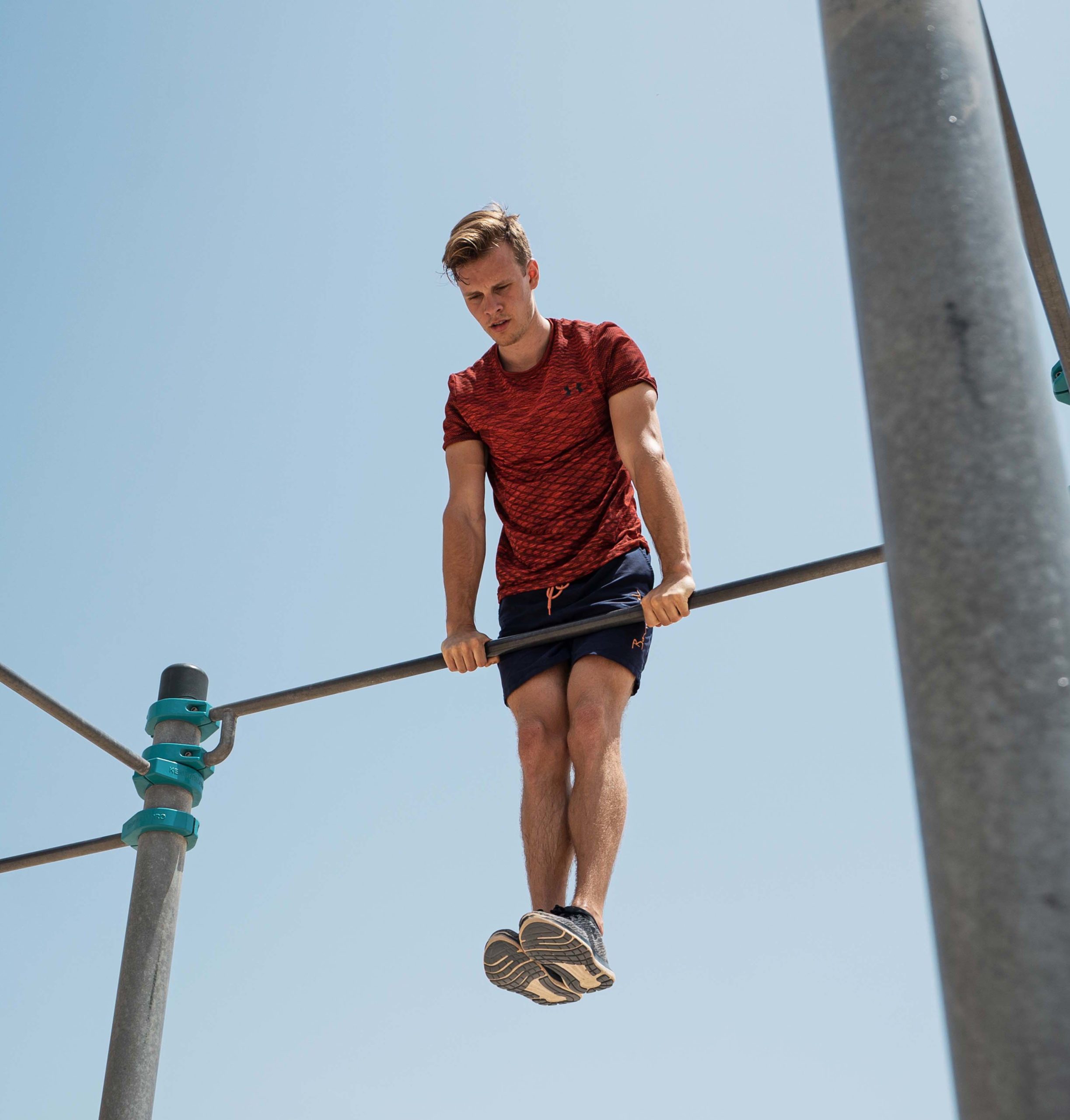Are you trying to learn how to do a handstand and feel like you've got stuck? Then you're in the right place! We've collected a ton of great exercises to help you learn how to do a handstand, common mistakes and how to avoid them to succeed! Learning how to do a handstand is a process that demands strengths, balance and patience. When you finally learn the handstand you'll experience a powerful feeling! It's well worth the journey. 
6 progresions to learn how to do a handstand
Here's six progressive exercises to increase your strength and balance when learning how to do a handstand. Think about practicing the technique, record yourself to see how your form looks and remember to practice, practice, practice until you get used to the movement. You got this!
Step 1 - Crowstance
Practice balancing on your hands with Crowstance. Crouch with your hands in front of you, lean forward and place the legs and knees on top of the elbows. Start by lifting one foot at the time, until you feel comfortable lifting both up. Activate the core (pull the navel up towards the back) to lift the lower body up from the ground.
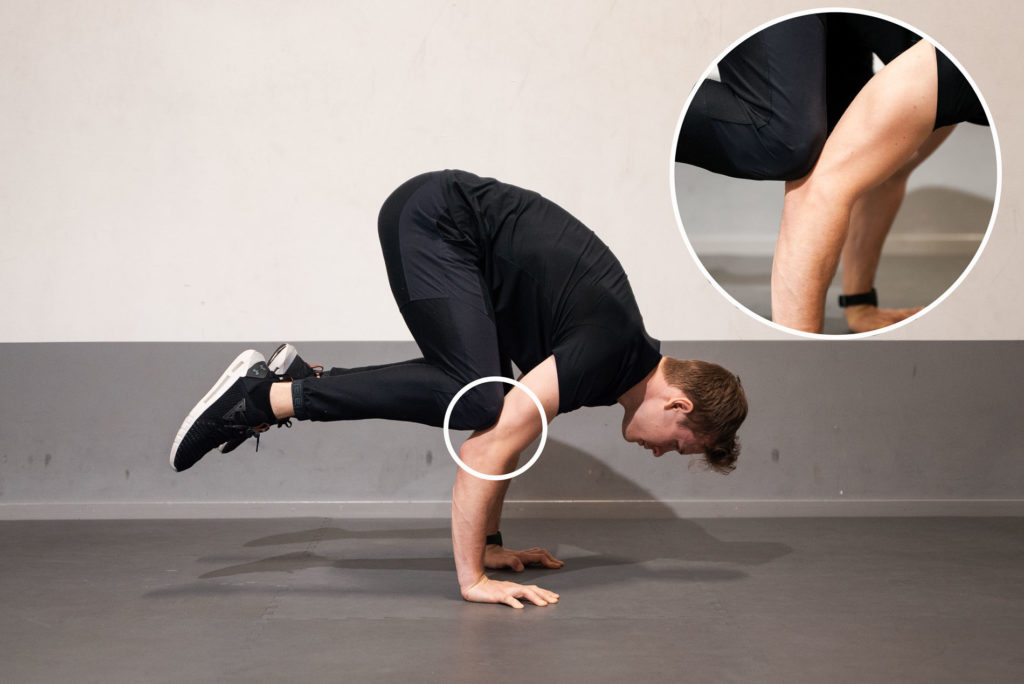
Step 2 - Half handstand
Use a box or something that's about knee high here. Place your feet on the box with your hands in front of you (like in the image below). Press the shoulders up and away from the floor by lengthening the arms and align the hip above the shoulders. A tip is to look through the arms, towards the box, and count loud to set number like ten.
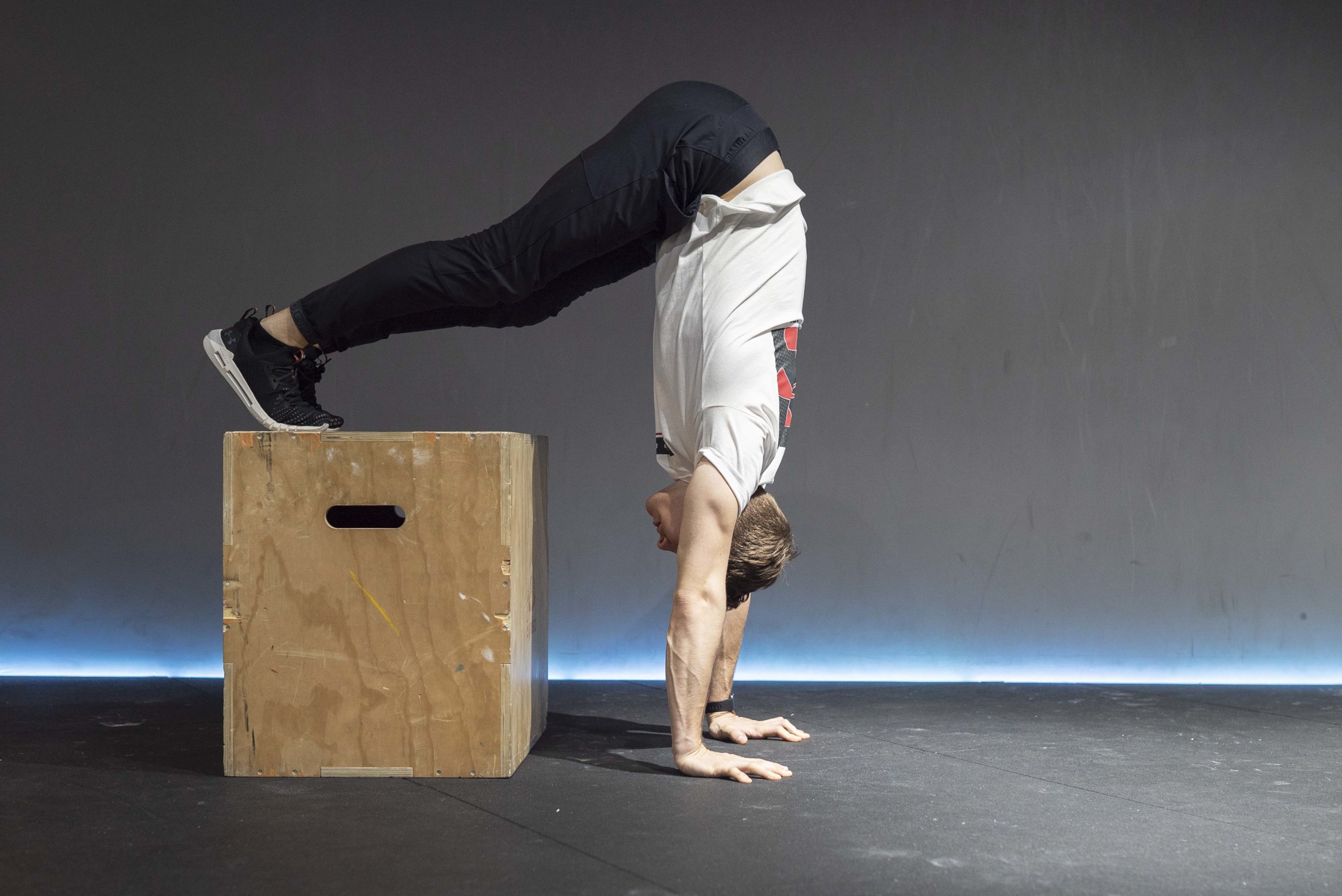
Step 3 - Handstand out from the wall
Place your hands about a meter (40 inches) away from the wall and walk up the wall with your feet, belly against the wall. The goal is to create a straight line from the hands to the feet. Keep arms straight, press up on the shoulders (to the ears), tighten the belly and butt with straight legs. Hold here for as long as possible. This exercise help you get used to standing upside down with the correct form when learning how to do a handstand.

Step 4 - Kick up to handstand
Practice kicking up to the handstand against a wall or have a friend holding your legs. Place your hands on the floor pretty close to the wall (or your friend) and kick up into the handstand. Work on finding balance directly when you enter the handstand and hold here for roughly 10-15 seconds, then come down from the handstand with control. The goal is the control the kick up and finding the perfect position as well as training the shoulders. If your friend can help you correct your form, like letting you know if you're out of alignment, tilting the hip or not pushing up on the shouders, it's of great help.
Step 5 - Handstand against wall
Here we want to stand as close to the wall as possible to get the feeling and courage to stand free later on. Either have your belly or back to the wall and lean as little as possible on the wall. A tip is to push one foot away from the wall and point it straight up with the other foot support against the wall. This helps you keep active and not leaning too much on the wall. The goal is to get as straight of a line as possible, from the hands to the toes.
1) Hands about shoulder wide in front of you in the handstand.
2) Shoulders open, meaning you press the shoulders towards the ears and away from the floor.
3) PPT (Posterior Pelvic Tilt), a backwards and upwards rotation of the pelvic bone.
4) Lengthen the legs and point the toes to the sky.

Step 6 – Freestanding handstand
Feel ready to try the freestanding handstand? After practicing the Crowstance and handstand against the wall you will have an easier time learning the freestanding handstand, then if you wouldn't have. However you might feel afraid to fall over or perhaps it still feel impossible to stand free? Then practice the technique and also check the common mistakes and fixes for them in the next section. You may need to stretch, strengthen the core, spread your fingers wide or similar. Repeat the steps above, repeat the technique and realize that learning how to do a handstand takes time but the journey is fun.

7 common mistakes and how to avoid them
A common issue when learning how to do a handstand is most of us want to learn it quicker than what's reasonable. The solutions isn't always just to kick up time after time into the handstand and try to find balance. But to stretch regularly, strengthen the core and practice until you understand the technique. Take a look at these seven common mistakes to see what you might have missed and need to work on.
A tip: When learning how to do a handstand, record yourself practicing the handstand to see what you need to improve. It's also a great method to track your progress.
1. Ignoring the warm-up
Do you warm-up before doing handstands? If you warm up your wrists, shoulders, chest and hip it's usually easier to find the correct form in the handstand. The joints get more flexible and you'll realize it feels better to add pressure to the wrists. Take a look at the video, here we're providing a tone of great warm-up exercises to try out. Works to follow-along as well.
2. Miss stretching chest and shoulders
When learning how to do a handstand the flexibility in your chest and shoulders can get in the way. Compare image one and three below, do you see a difference? If you're limited by the flexibility in the chest and shoulders it usually cause you to bend the arms to find "balance" and you end up in a "banan handstand", (image one). The solution is the stretch the chest and shoulders (read regularly) until you get more flexible, for example 15 minutes every other day. You will notice a huge difference, just give it time.
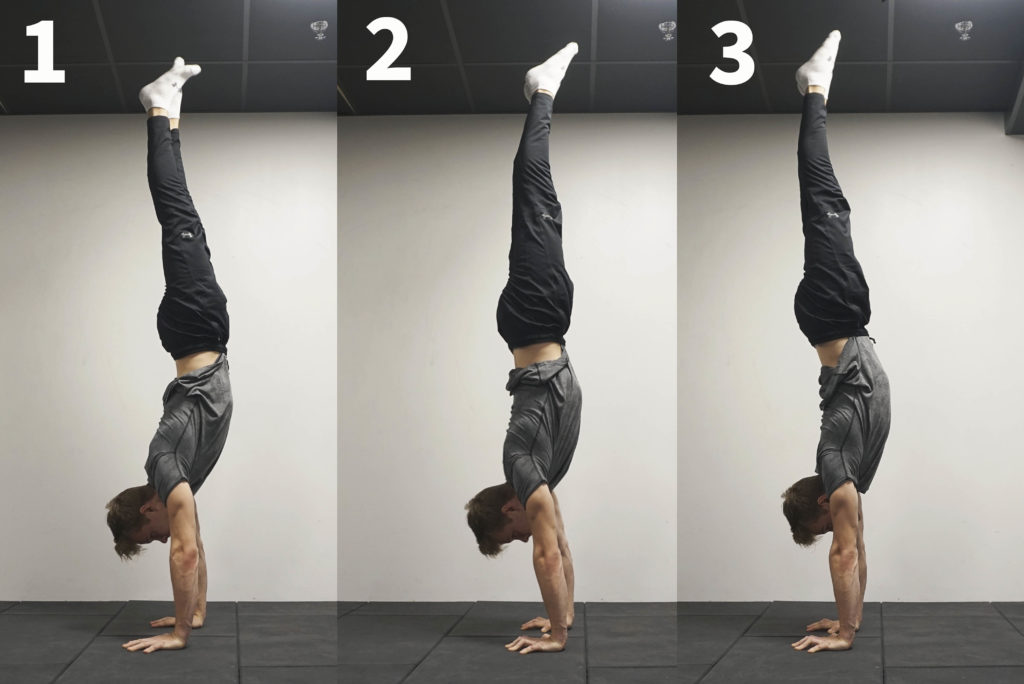
3. Lacking core stability
Another reason you end up in the infamous "banana handstand" may be due to lacking activation of the core when learning how to do a handstand. Meaning you arch the lower back and relax the belly. To get stability in the handstand you want to hold a PPT-position (Posterior Pelvic Tilt), which is a backwards and upwards rotating motion in the pelvic bone. To get the technique and strength in this position, incorporate it into exercises like push-ups, dips and the plank hold. A great exercise that specifically training the PPT-position is Hollow Body Holds (see image).
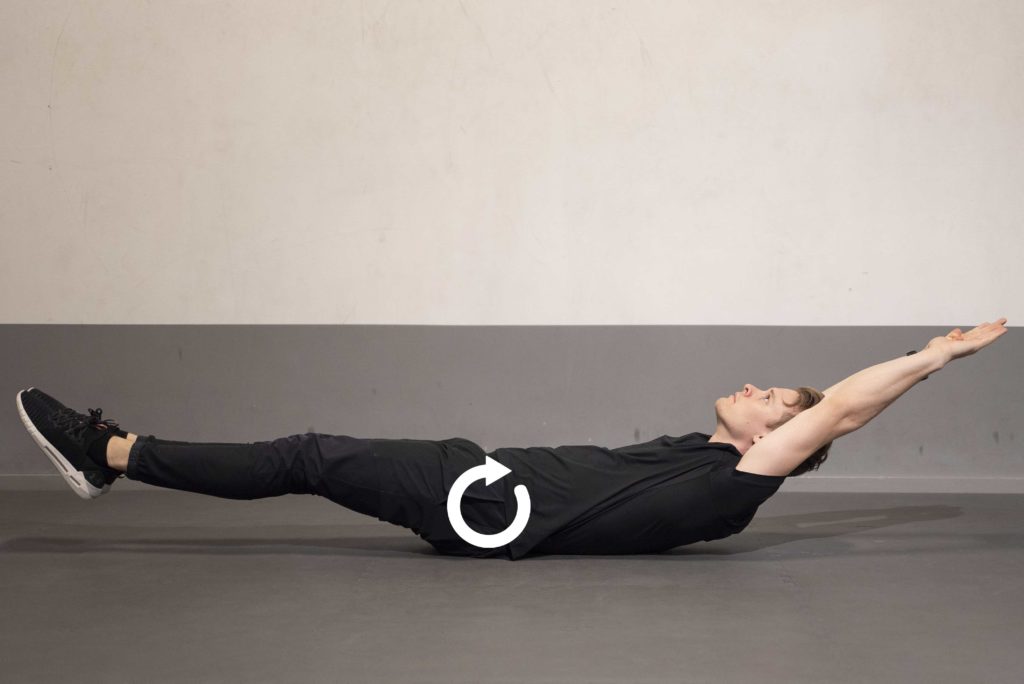
4. Weight on the back of the palm
How do you place your hands on the floor? A common problem is applying too much weight on the back of the palm and not spreading the fingers out on the floor. To find balance in the handstand it helps to be active with the hands. Spread your fingers out (spider hands), imagine you pull them towards the palm and create a slight space under the fingers. This helps to get a good grip and counter the weight being put on the back of the palm. When learning how to do a handstand, no matter if it's against a wall or free, press those fingers down into the floor to find balance, sort of like playing the piano.

5. Not lengthening the arms
Many forget to press the shoulders up towards the ears and lengthen the arms. What may happen is that you bend the shoulders and arms, which makes you out of balance and the handstand gets tough to hold. By activating the shoulders and pushing them out into a locked out position it gets easier to find and maintain balance. Holding the locked out position is heavy at first. Therefore it helps to strengthen those muscles with exercises like scapula push-ups, scapula pull-ups and shrugs in the handstand against the wall or a box.

6. Too hasty kick-up
Mastering the kick-up will make it easier to learn how do to a handstand. A common issue is placing the hands too far forward on the floor, or right under neath you. Usually you get too much speed up or none at all. Recognize yourself? Place the hands about one meter (40 inches) in front of the feet and kick straight up, instead of forward. Also try having your hands on the floor from start and kick-up with one leg at a time. See video.
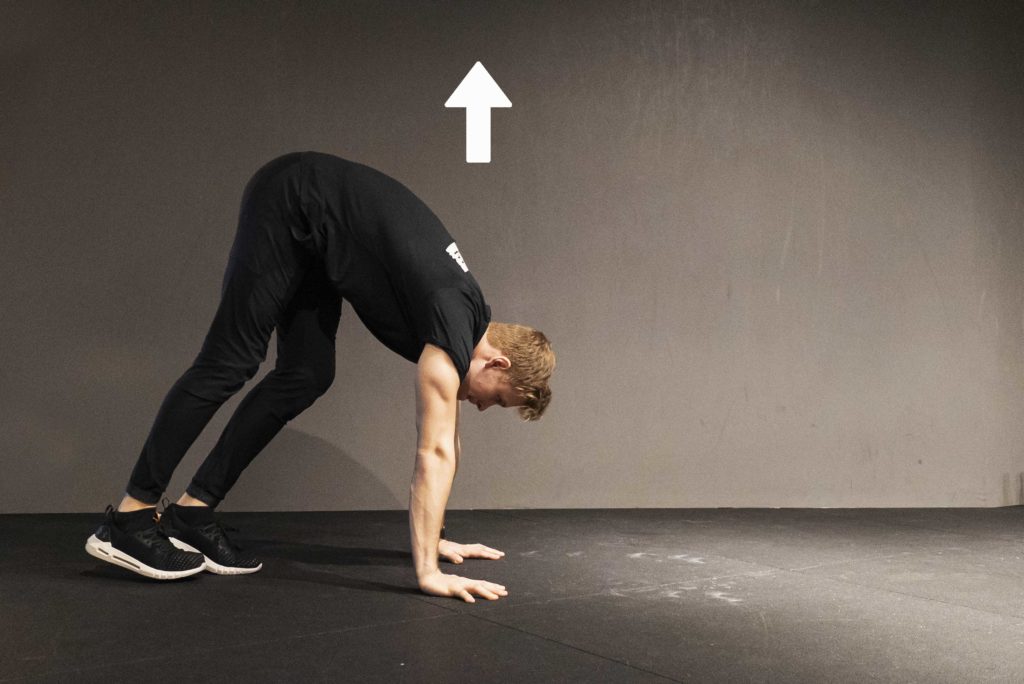
7. You're afraid to fall
It's usually enough with one hard fall to make a person afraid of the handstand. To feel safe its a good idea to practice how to fall correctly. Here's two great methods to do that:
1. In the handstand, place your one hand in front of you and perform a cart-wheel down. As soon as you feel like you're falling it's easy to place one hand in front of you and follow with the legs.
2. Roll down into a somersault. Remember to tilt your head down, cheek to the throat and bend the arms to support you when rolling down. Begin practicing somersaults on the floor, then from the Crowstance position then finally from the handstand. See video.
For last: have a reasonable time frame and find a structure
Lastly, it's worth mentioning that setting a reasonable time frame and finding a structure is important to learn how to do a handstand. Look at this like a project you will work on for a longer period of time. A tip is to spend about 15 minutes training for the handstand before your push workouts or two-tree times per week. Find a structure that works for you that helps you regularly practice the handstand. When you learn how to do a handstand there's a whole new world of fun possibilities and challenges that open up!
One final advice is to get professional help from someone who's done the journey. For example a personal training helping you one-on-one or have a program to help you get a good structure of the workouts. Read more about our services PT in Stockholm and PT Online.







